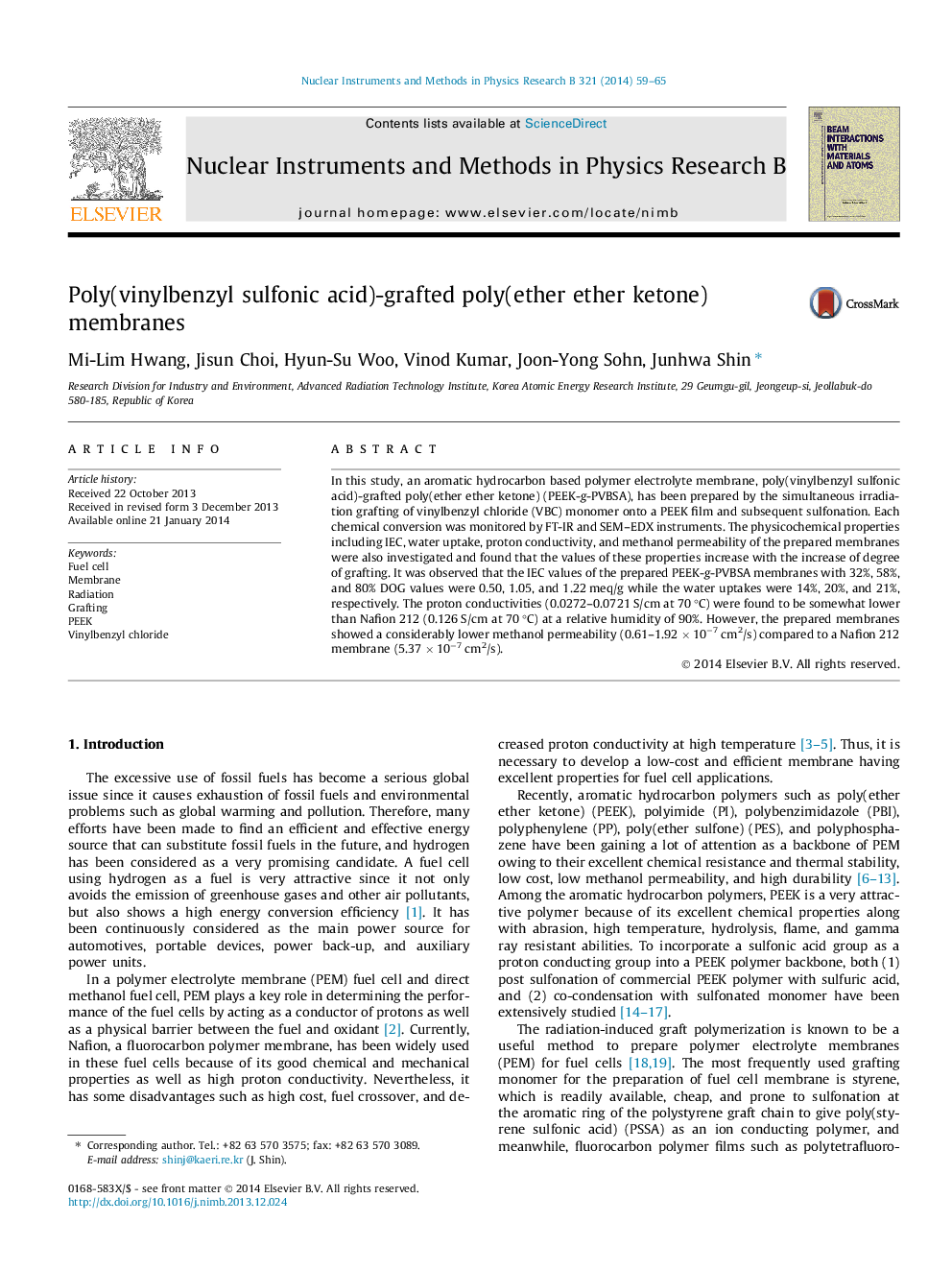| Article ID | Journal | Published Year | Pages | File Type |
|---|---|---|---|---|
| 1680996 | Nuclear Instruments and Methods in Physics Research Section B: Beam Interactions with Materials and Atoms | 2014 | 7 Pages |
•PEEK-g-PVBSA, a polymer electrolyte membrane was prepared by a radiation grafting technique.•Poly(ether ether ketone) (PEEK), an aromatic hydrocarbon polymer was used as a grafting backbone film.•The water uptake, proton conductivity, and methanol permeability of the membranes were evaluated.•PEEK-g-PVBSA membranes show considerably lower methanol permeability compared to a Nafion membrane.
In this study, an aromatic hydrocarbon based polymer electrolyte membrane, poly(vinylbenzyl sulfonic acid)-grafted poly(ether ether ketone) (PEEK-g-PVBSA), has been prepared by the simultaneous irradiation grafting of vinylbenzyl chloride (VBC) monomer onto a PEEK film and subsequent sulfonation. Each chemical conversion was monitored by FT-IR and SEM–EDX instruments. The physicochemical properties including IEC, water uptake, proton conductivity, and methanol permeability of the prepared membranes were also investigated and found that the values of these properties increase with the increase of degree of grafting. It was observed that the IEC values of the prepared PEEK-g-PVBSA membranes with 32%, 58%, and 80% DOG values were 0.50, 1.05, and 1.22 meq/g while the water uptakes were 14%, 20%, and 21%, respectively. The proton conductivities (0.0272–0.0721 S/cm at 70 °C) were found to be somewhat lower than Nafion 212 (0.126 S/cm at 70 °C) at a relative humidity of 90%. However, the prepared membranes showed a considerably lower methanol permeability (0.61–1.92 × 10−7 cm2/s) compared to a Nafion 212 membrane (5.37 × 10−7 cm2/s).
